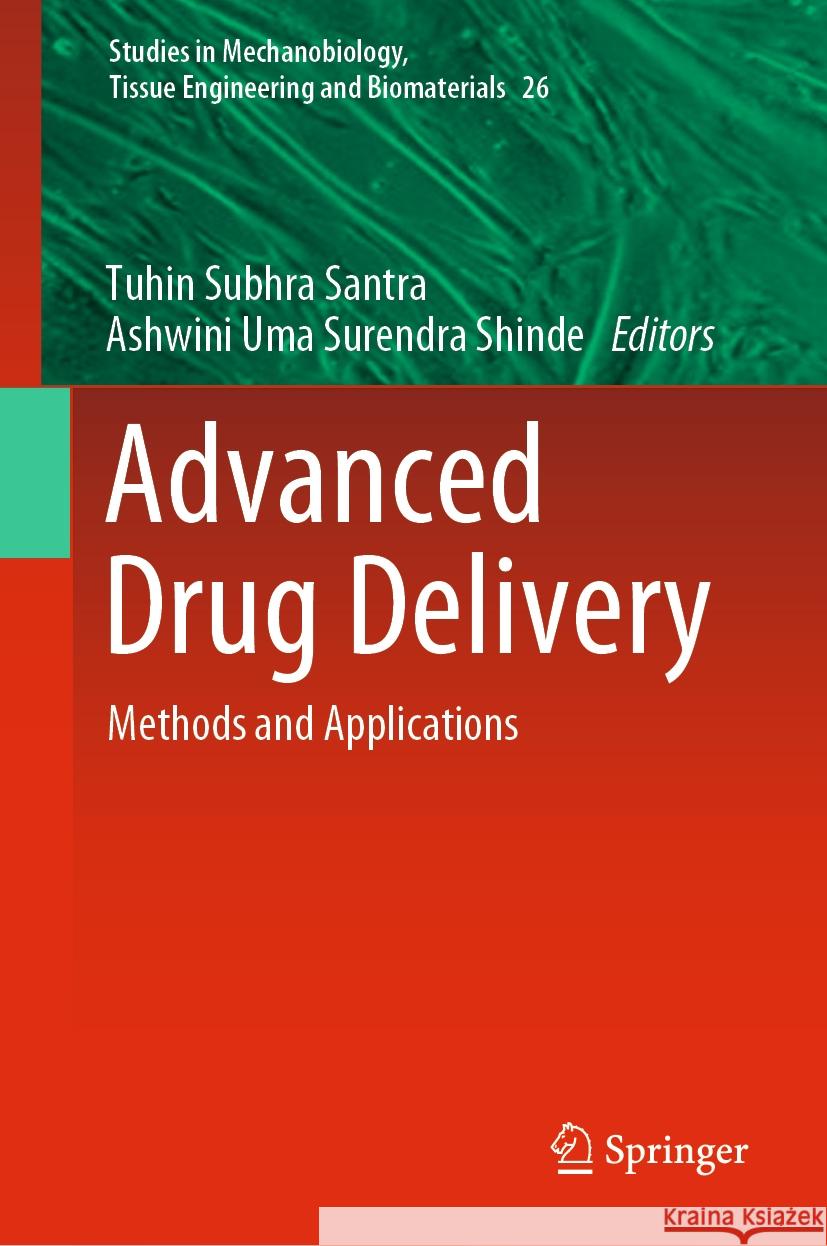Advanced Drug Delivery: Methods and Applications » książka
topmenu



Advanced Drug Delivery: Methods and Applications
ISBN-13: 9789819965632 / Angielski
Advanced Drug Delivery: Methods and Applications
ISBN-13: 9789819965632 / Angielski
cena 664,51 zł
(netto: 632,87 VAT: 5%)
Najniższa cena z 30 dni: 655,41 zł
(netto: 632,87 VAT: 5%)
Najniższa cena z 30 dni: 655,41 zł
Termin realizacji zamówienia:
ok. 20 dni roboczych.
ok. 20 dni roboczych.
Darmowa dostawa!
Kategorie:
Kategorie BISAC:
Wydawca:
Springer
Seria wydawnicza:
Język:
Angielski
ISBN-13:
9789819965632
Chapter 1. Biological methods.- Chapter 2. Liposomal based drug delivery system.- Chapter 3. Hydrogel-based drug delivery strategies.- Chapter 4. Monoclonal antibodies.- Chapter 5. Electroporation.- Chapter 6. Photoporation.- Chapter 7. Mechanoporation.- Chapter 8. Magnetoporation.- Chapter 9. Microinjection.- Chapter 10. Jet injection.- Chapter 11. Sonoporation.- Chapter 12. Device based drug delivery techniques – microfluidics Chapter 13. Nanoparticles drug delivery systems.- Chapter 14. BioMaterials.- Chapter 15. Implanted drug delivery systems.- Chapter 16. Transdermal drug delivery systems.- Chapter 17. Subcutaneous drug delivery systems.- Chapter 18. Nasopulmonary drug delivery systems.- Chapter 19. Mucosal drug delivery systems.- Chapter 20. Intrauterine drug delivery systems.- Chapter 21. Gastro retentive drug delivery systems.- Chapter 22. Endoscopic assisted drug delivery.- Chapter 23. Theranostics.
Dr. Tuhin Subhra Santra is an Associate Professor in the Department of Engineering Design at the Indian Institute of Technology Madras, India, from July 2016. He was tenure track Honorary Visiting Professor at National Tsing Hua University Taiwan from 2108~2020, and he was Visiting Professor at the University of Cambridge, the UK, in 2019. Dr. Santra received his Ph.D. degree in Bio-Nanoelectro Mechanical Systems (Bio-NEMS) from National Tsing Hua University in 2013. Dr. Santra was Post-doctoral Researcher at the California Nano System Institute (CNSI), University of California, Los Angeles (UCLA), the USA, from 2015~2016. His main research areas are Bio-NEMS, MEMS, Single Cell, Single Molecule Detection, Biomedical Micro-/Nanodevices, Nanomedicine, etc. Currently, Dr. Santra serves as Guest Editor for Cell and Micromachines, MDPI Journals. He served as Guest Editor for the Journal of Cells, MDPI, in 2020, International Journal of Molecular Science (IJMS) in 2018, 2017, and 2015 and Sensors Journal in 2016, Journal of Molecules in 2016, Micromachines in 2020, and 2013, among others. He was Conference Chair and Committee Member of IEEE-NEMS in 2017, 2020, and 2021. Dr. Santra has received many honors and awards such as Wellcome Trust/DBT India Alliance Fellowship in 2018, Honorary Research Fellow from National Tsing Hua University, Taiwan in 2018, Bharat Bikas Award in 2017, IEEE-NEMS best conference paper award in 2014, and a silver medal from Vidyasagar University in 2004. He was Editor of the book entitled Nanomaterials and Their Biomedical Applications by Springer Nature, Singapore, in 2021, Handbook of Single-cell technologies by Springer Nature Singapore 2021, Microfluidics and Bio-NEMS: Devices and Applications by Jenny Stanford Publisher, Singapore, in 2020, and Essential of Single-Cell Analysis Springer, Germany, in 2016, among others. He published more than 8 books, 40 SCI journals, 20 book chapters, 20 US/Taiwan/Indian patents, and 20 international conference proceedings in his research field. Currently, he is serving as Book Editor entitled "Single-Biomolecules Detection and Analysis" by CRC press.
Dr. Ashwini Uma Surendra Shinde earned her Ph.D. in Biotechnology from The Institute of Science, Mumbai, India, in 2021, specializing in the green synthesis of diverse metal and polymeric nanoparticles and their potential against cancer cells. Currently, Dr. Shinde holds a post-doctoral position under the mentorship of Dr. Tuhin Subhra Santra. Her primary research sphere encompasses bio-nanotechnology and pioneering physical methods of drug delivery systems. Her significant contributions extend to the publication of 8 research articles in prestigious SCI Journals, along with 4 review articles and 4 book chapters. Furthermore, her innovative work has culminated in the securing of 5 Indian Patents.
This book provides an overview of various drug delivery systems at the cellular level including biological, chemical methods, and most importantly physical methods such as photoporation, electroporation, mechanoporation, and device-based techniques (e.g., microfluidics), as well as organism-level techniques including nanomaterials, biomaterials, and transdermal. Drug delivery (DD) can be defined as the method and route by which an active pharmaceutical ingredient (API) is administered to promote its desired pharmacological effect and/or convenience and/or to reduce adverse effects. Drug delivery systems are developed to maximize drug efficacy and minimize side effects. As drug delivery technologies improve, the drug becomes safer and more comfortable for patients to use. During the last seven decades, extraordinary progress has been made in drug delivery technologies, such as systems for long-term delivery for months and years, localized delivery, and targeted delivery. The advances, however, will face the next phase considering the future technologies that we need to overcome many physicochemical barriers for new formulation development and biological unknowns for treating various diseases. Thus, various technologies are built at a single-cell level as well as an organism level.
This book is useful at the university level for graduate courses or research studies and biotechnology-based companies with research and development on cell-based analysis, diagnosis, or drug screening. This book is also very useful for researchers in drug delivery technologies, which came in frontier research for the past decade.
1997-2024 DolnySlask.com Agencja Internetowa
Zobacz: Księgarnia Czeska | Wydawnictwo Książkowe Klimaty | Mapa strony | Lista autorów
KrainaKsiazek.PL - Księgarnia Internetowa
KrainaKsiazek.PL - Księgarnia Internetowa









